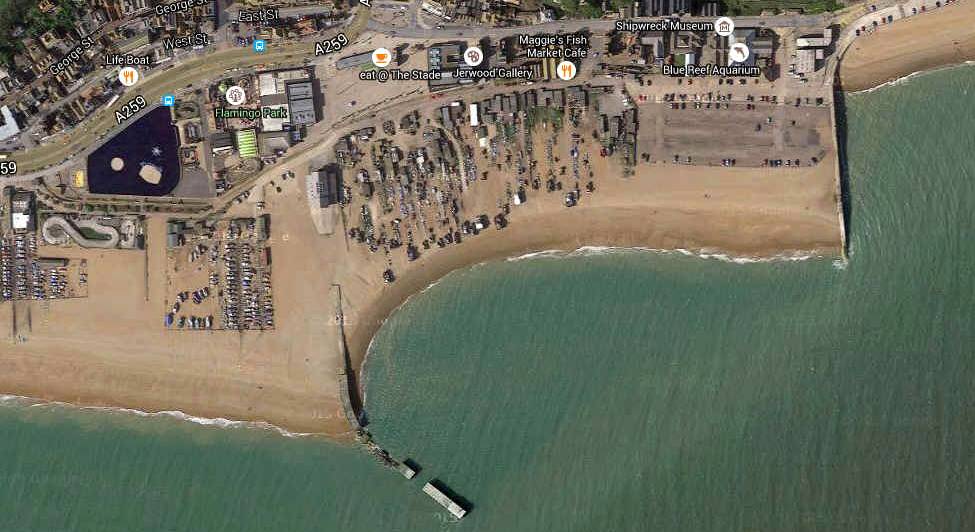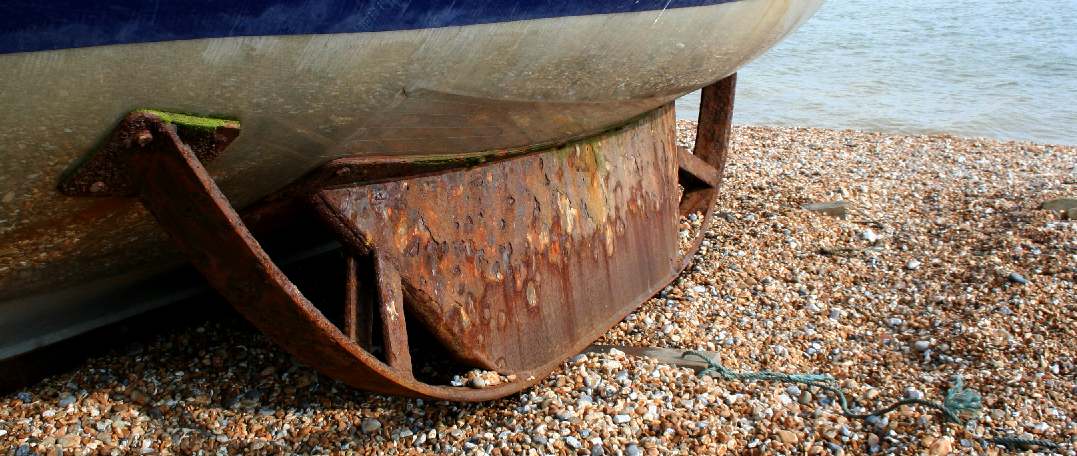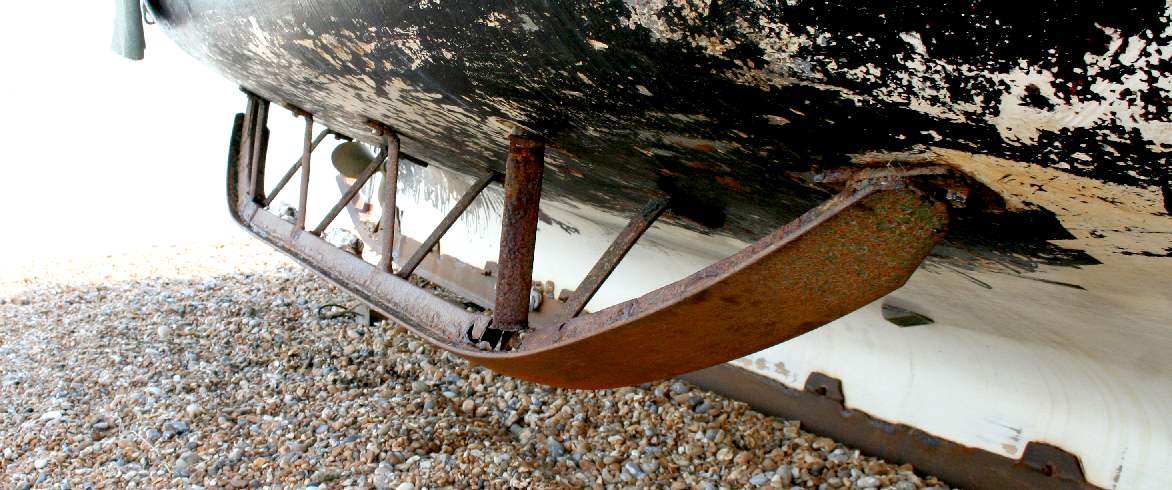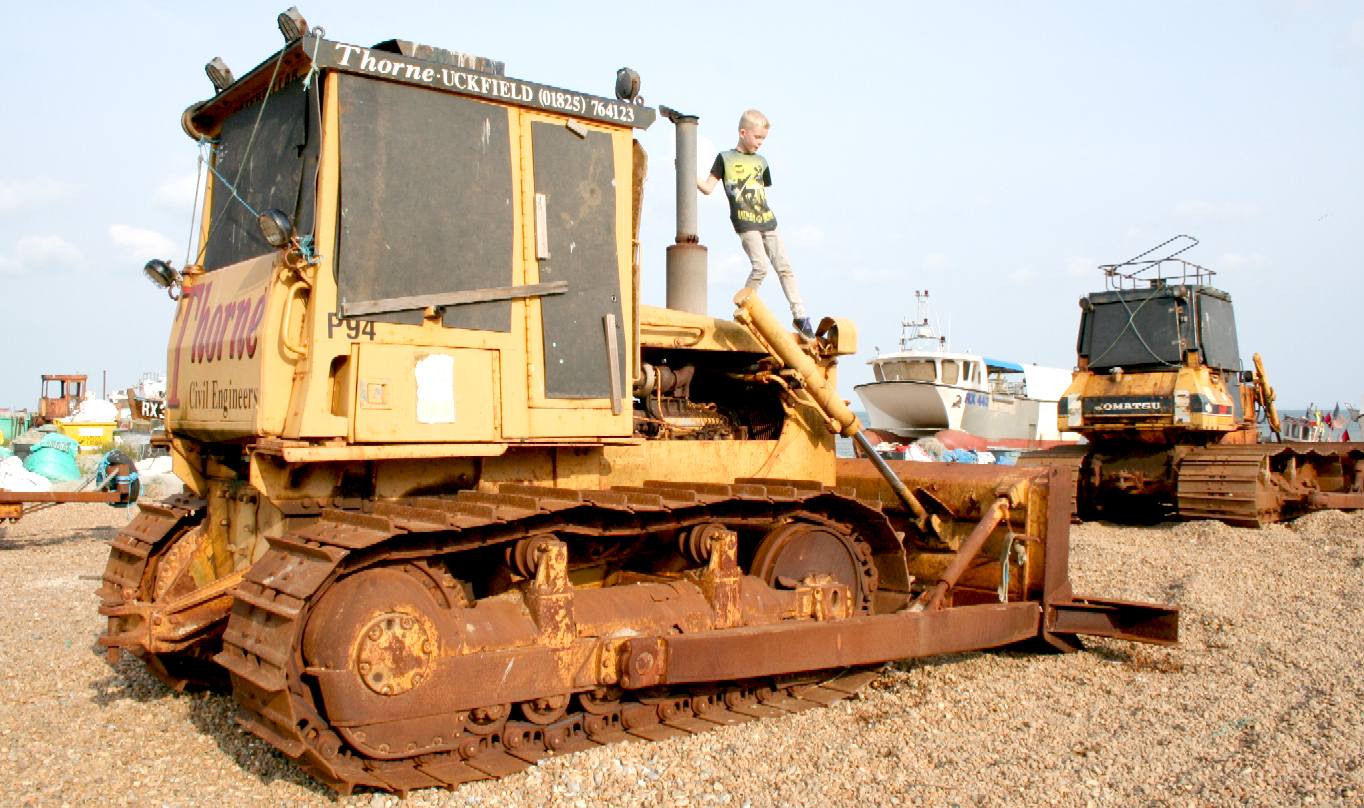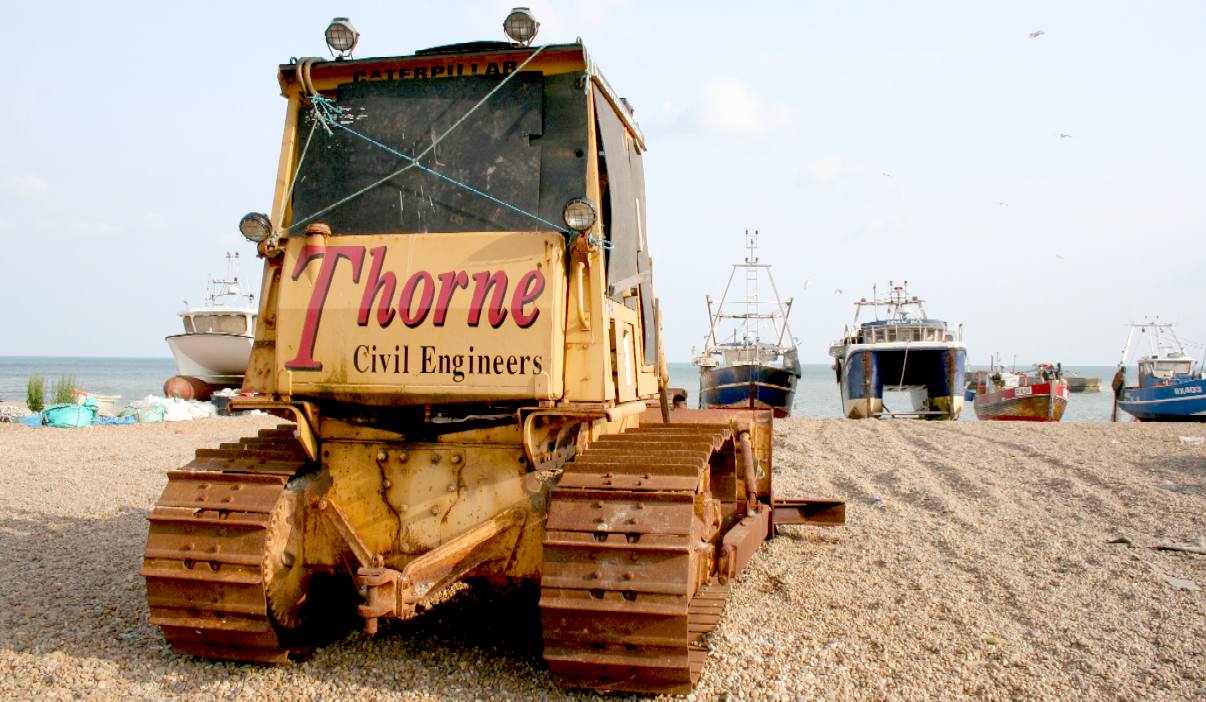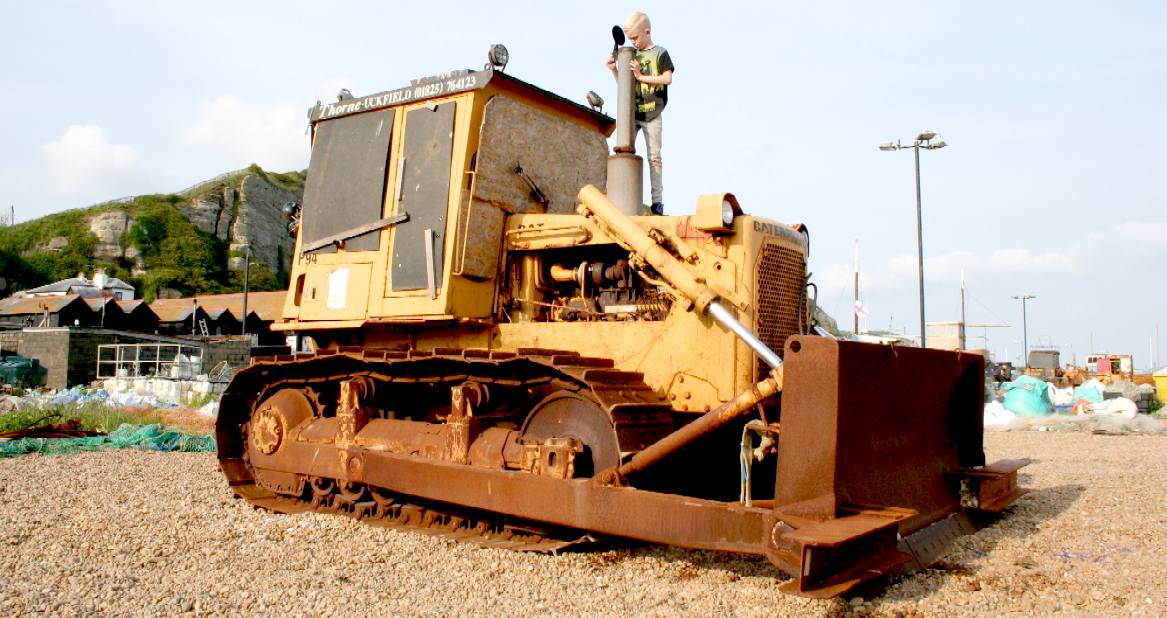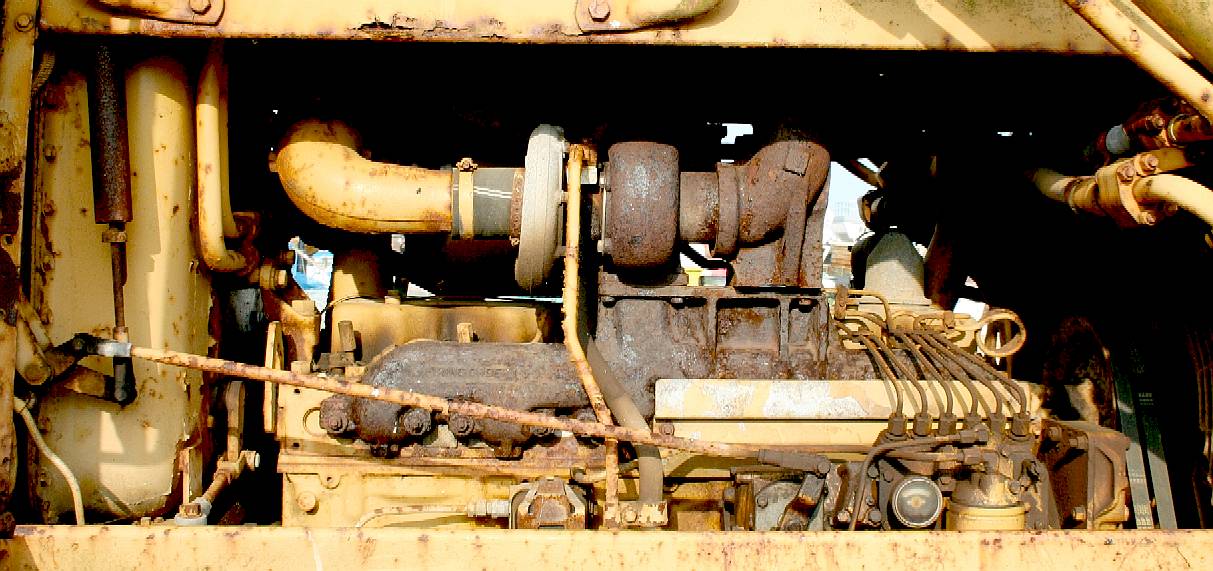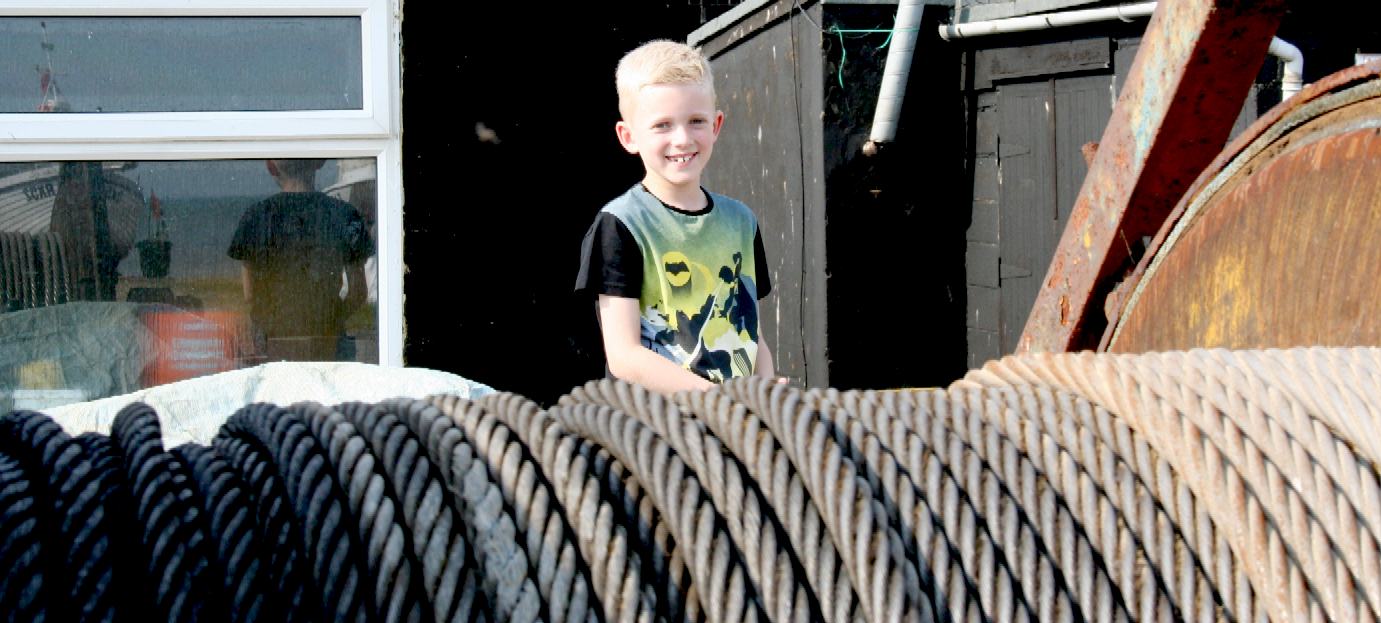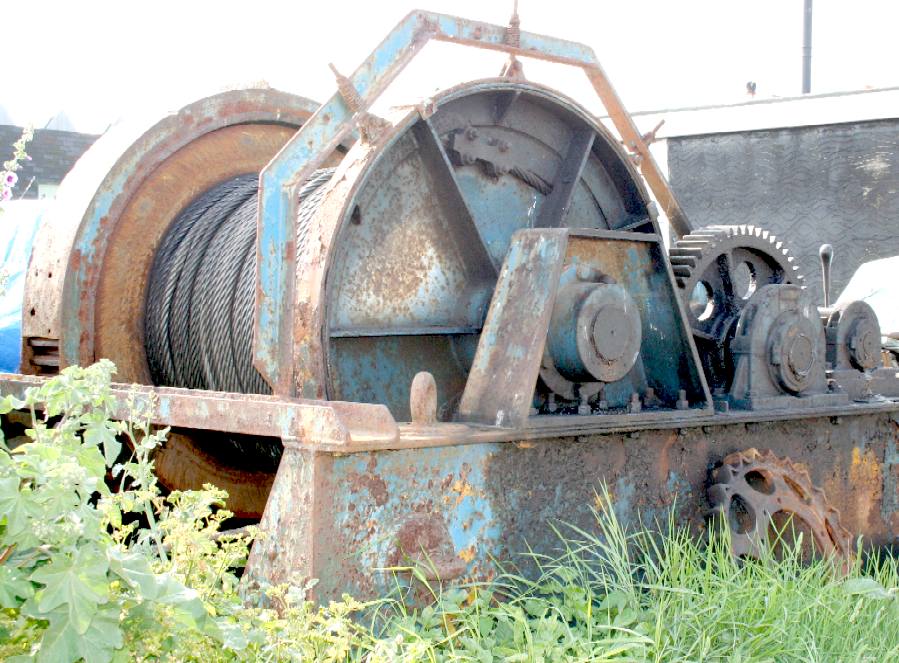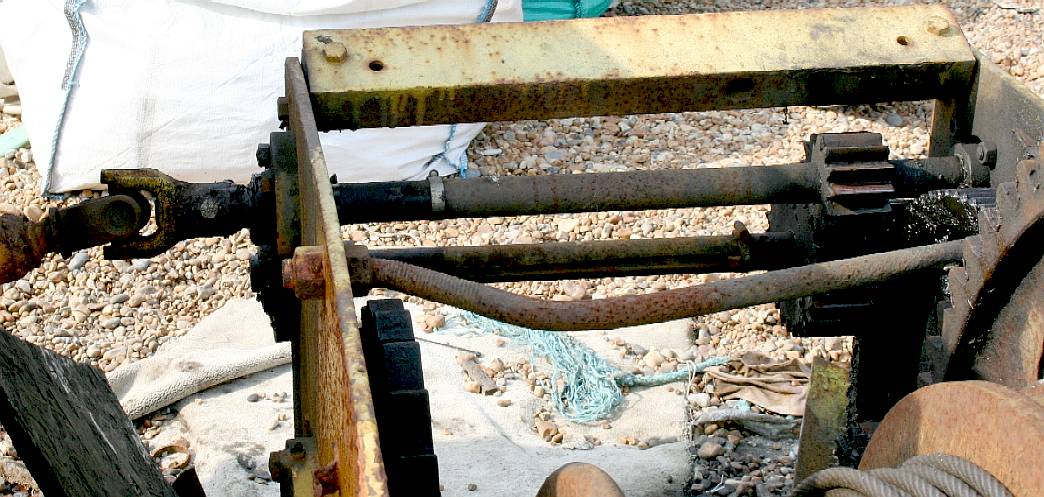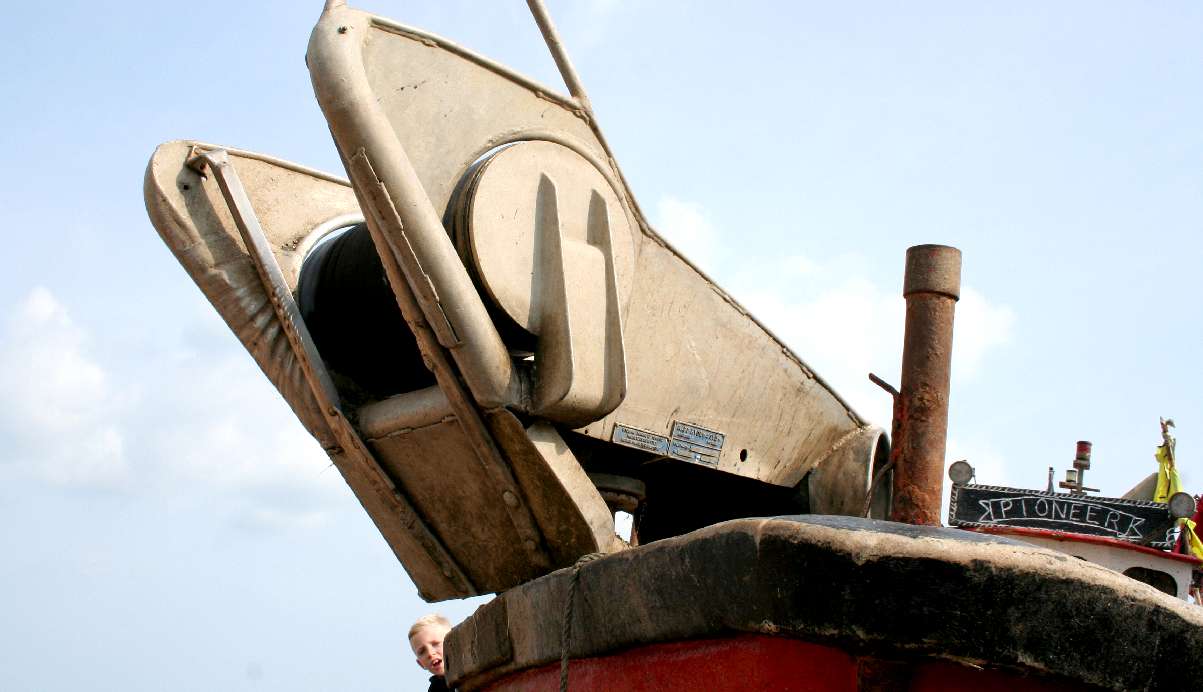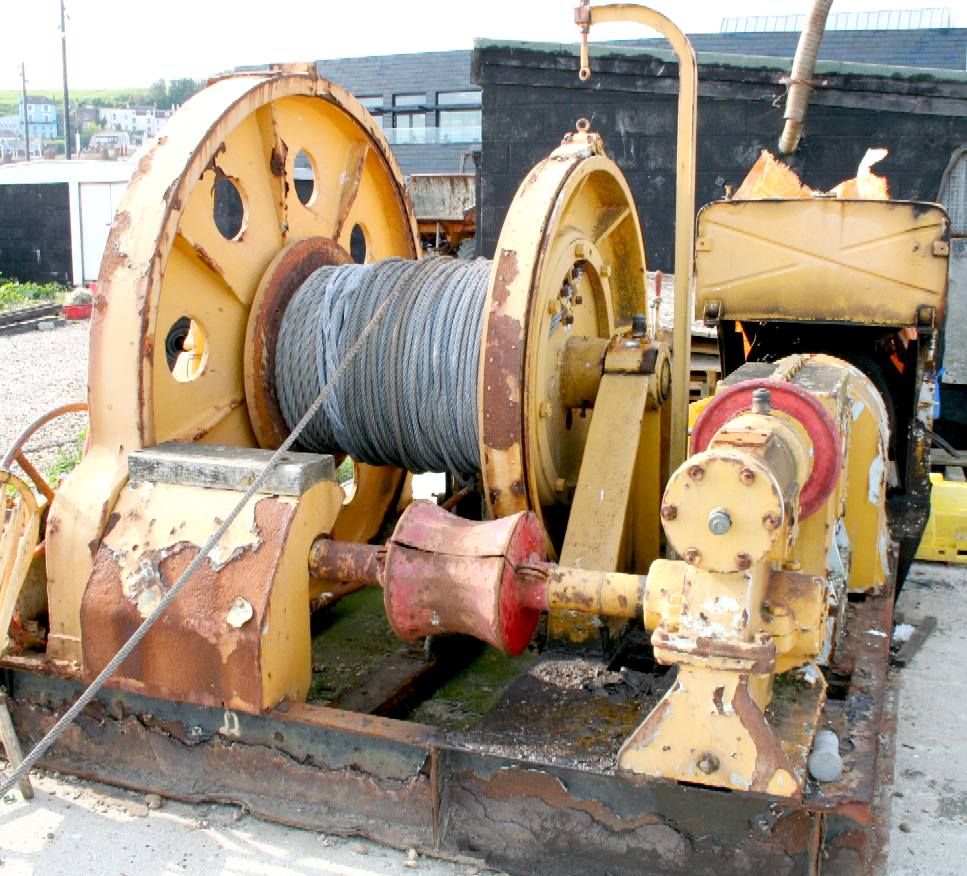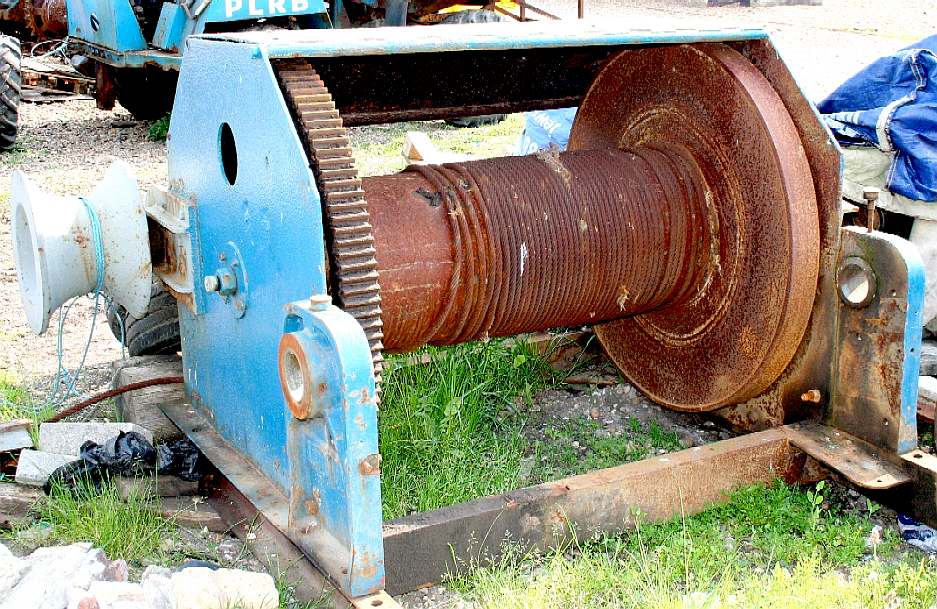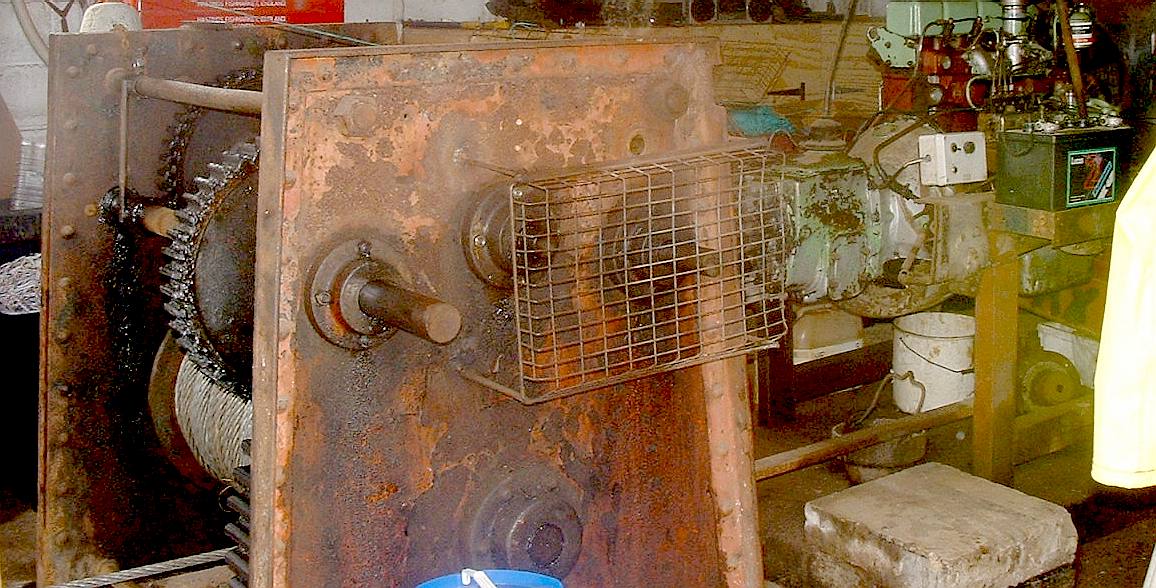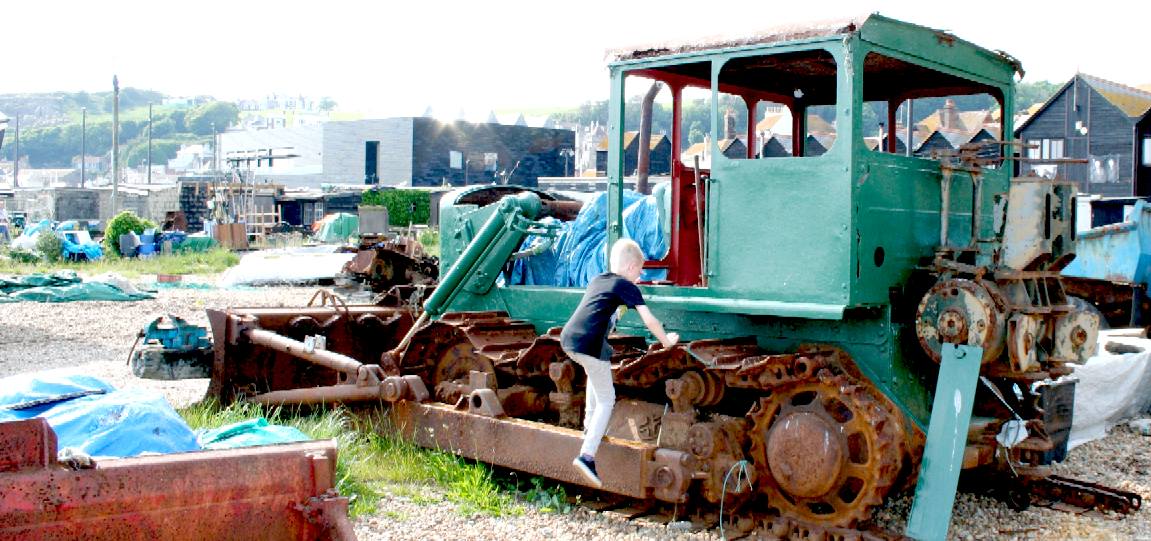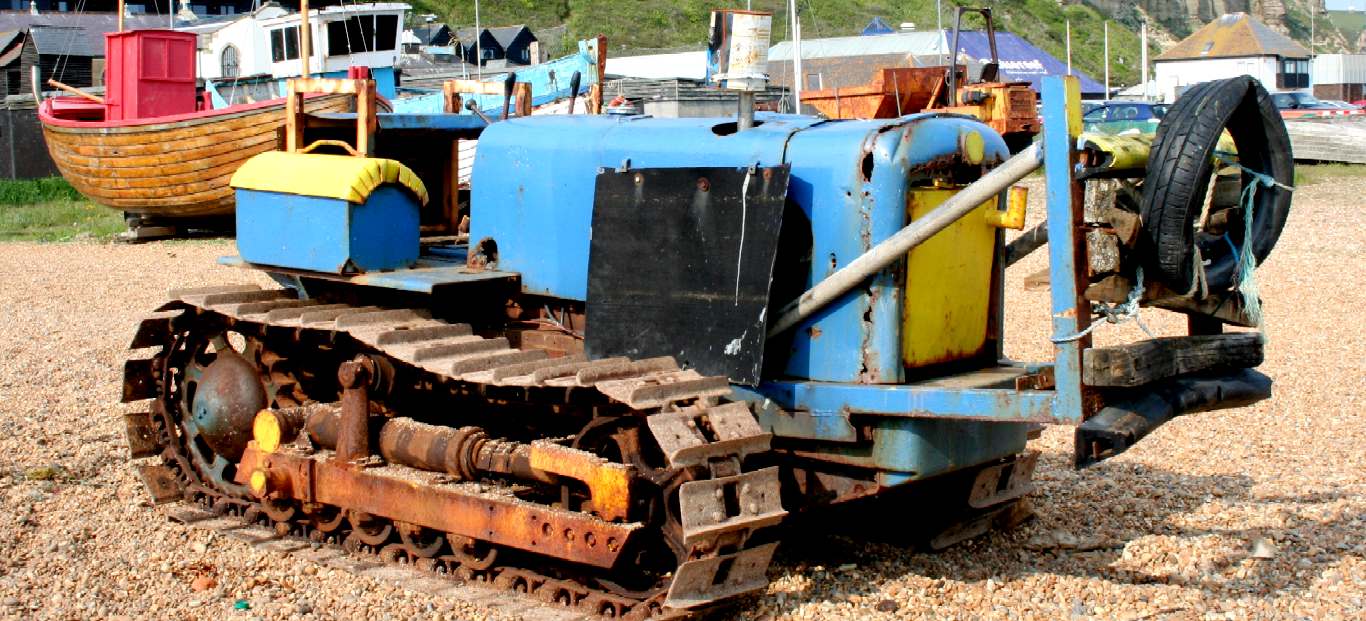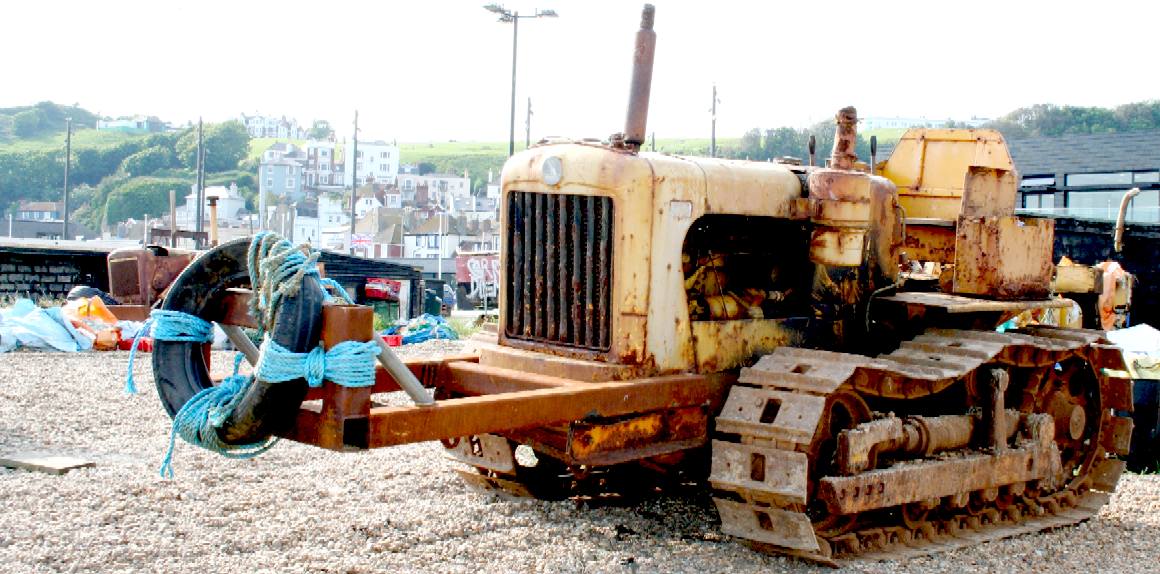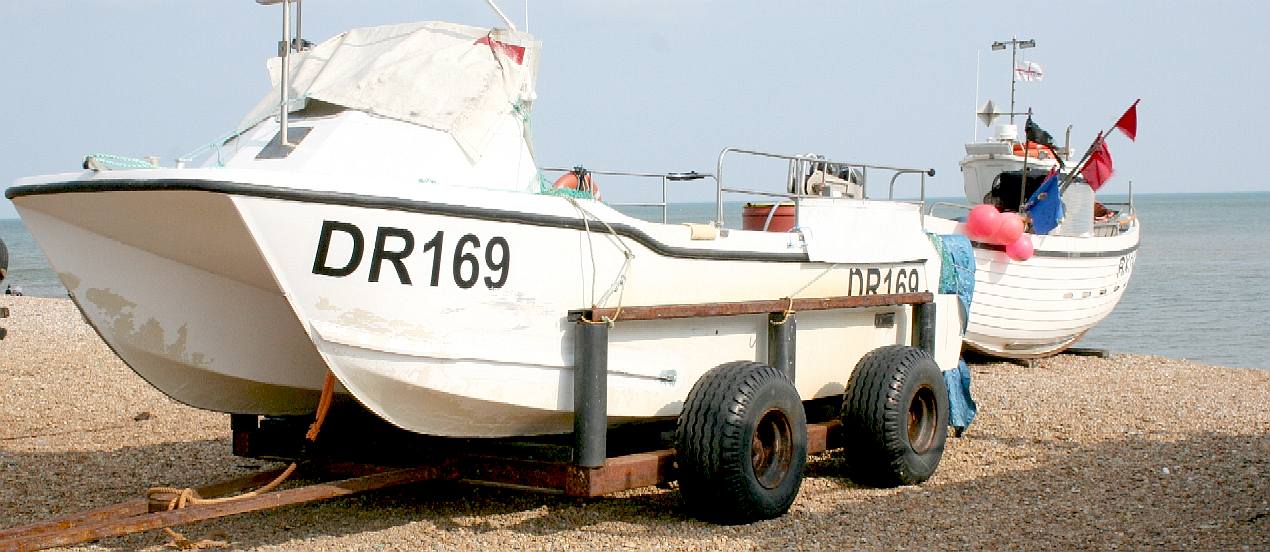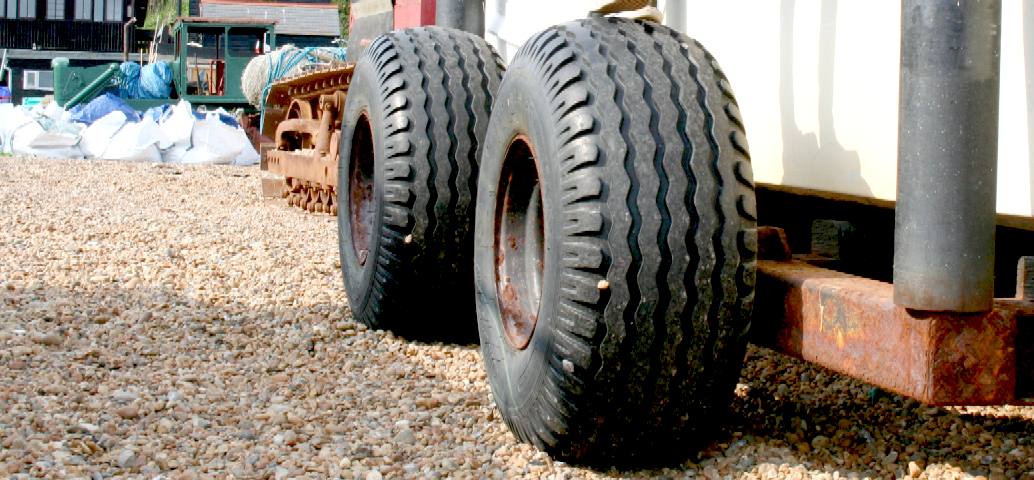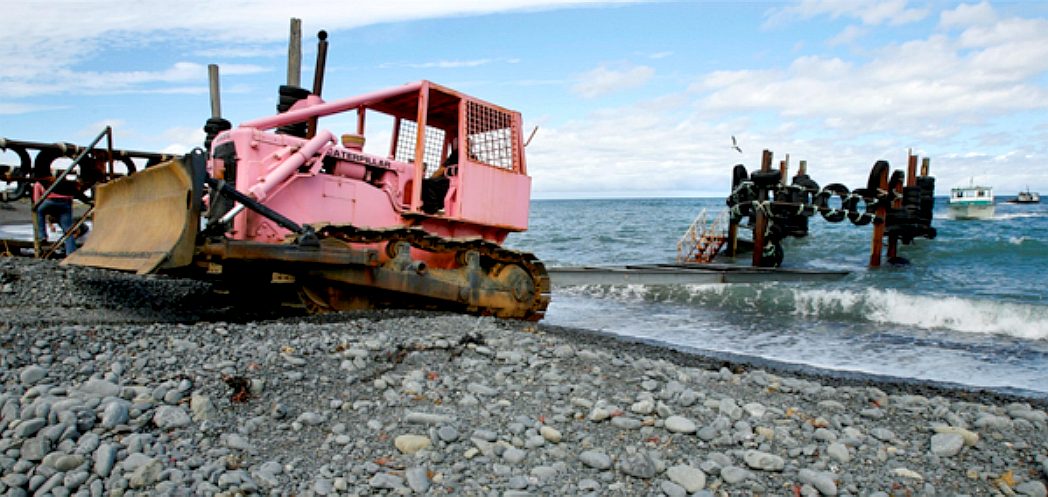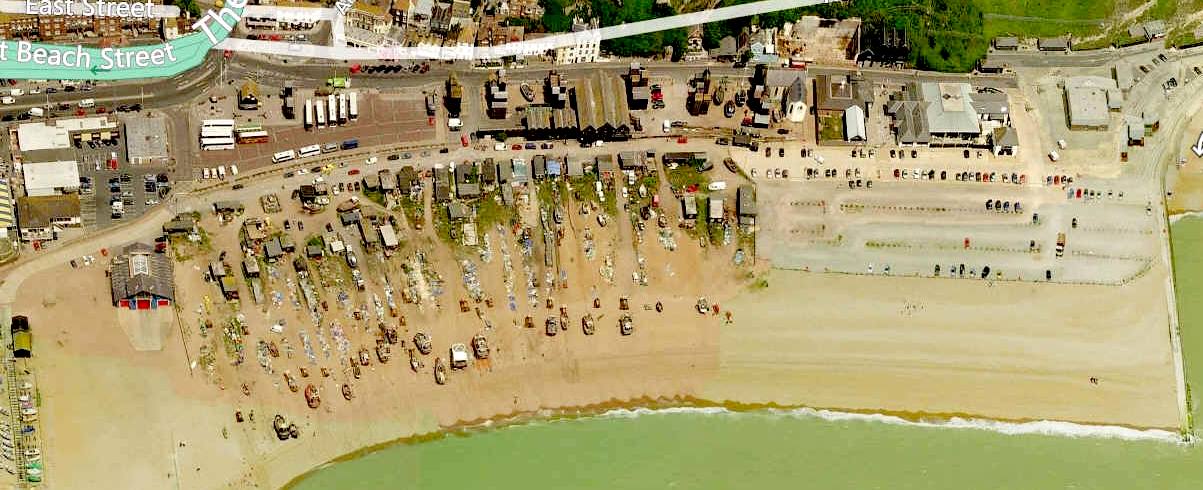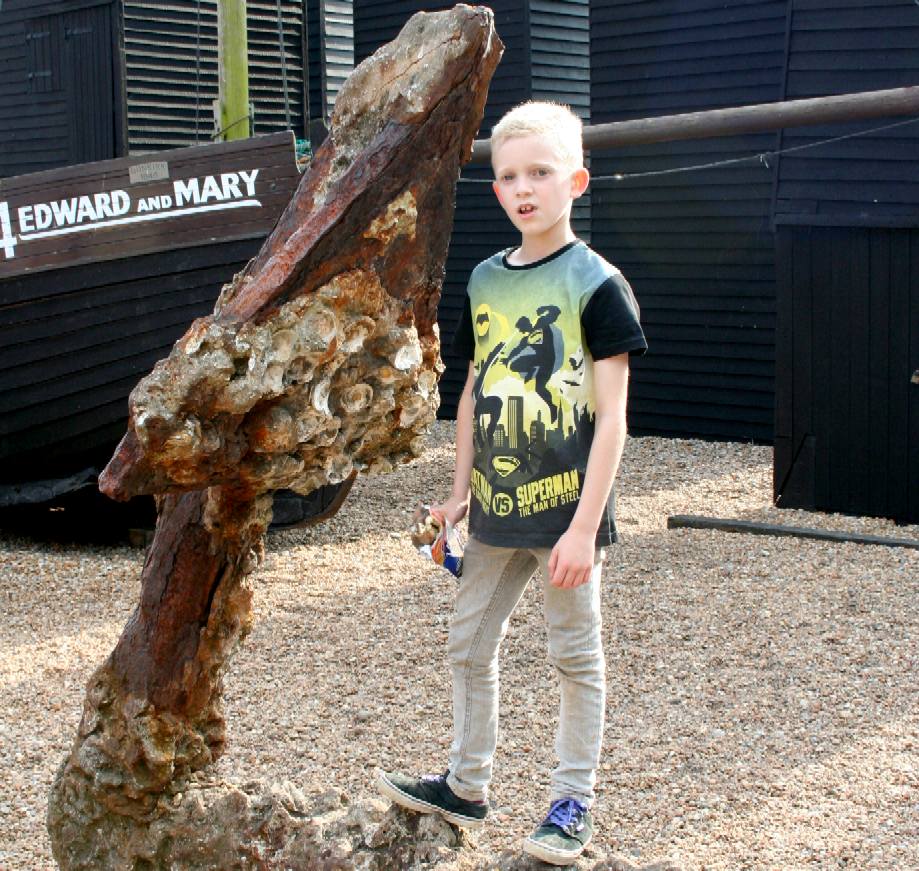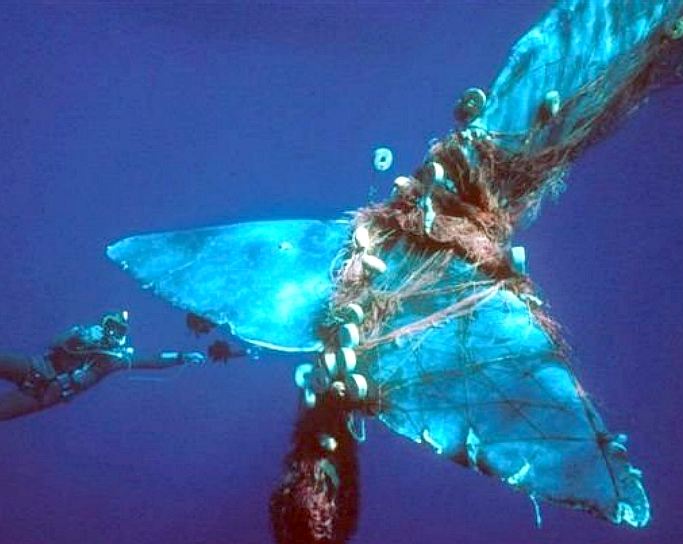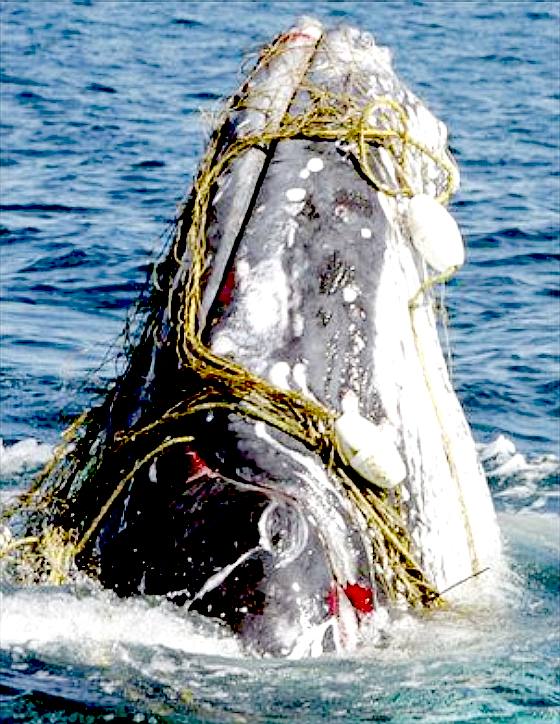|
AMPHIBIOUS LAUNCH - AMPHIMAX - CHASSIS - DIESELS - FLOATATION - HYDRAULICS - LAUNCH SITE SX - MODEL 1/20 - TIMETABLE - TRACKS - TRAILER - WHEELS
|
|
|
HASTINGS STADE - This is an aerial view of the largest beach launched fishing fleet in the world. For these hard working fishermen launching from and recovery to the beach is an everyday function of the catch and a grueling chore that we do not envy. We do though share common ground if we want to operate SeaVax in some areas of the world our development prototype must be able to emulate this activity without all of the ground preparations and support vehicles you will see on this page - if that is, it is humanly possible - hence this survey (captured in photographs on a May Bank Holiday) for our lightning feasibility study.
THE STADE - The famous Sussex beach has a steep slope lead in that is ideal for launching, followed by a more gently inclined beach that is ideal for beaching. What is so fascinating about the boats here is the variety of designs all to tackle the awesome task of launching a medium weight vessel from the beach and then recovering it - as economically as possible. As part of our lighting feasibility study, this is the place to start, to see how hundreds of practical fisherman and marine engineers have risen to the challenge. Copyright © May 29 2016, all rights reserved. You will need permission from Bluebird Marine Systems Ltd to reproduce this photograph.
HASTINGS BEACH - The fishing boats are designed to remain upright independently, so doing away with the need for a dock. Once over the hump, the boats are relatively level and easy to work on. Note that every hull has three keels in effect. Copyright © May 29 2016, all rights reserved. You will need permission from Bluebird Marine Systems Ltd to reproduce this photograph.
HULL MODS - A close up of the steel skids on the hull of one fishing boat. Making these involves an element of blacksmithing, coupled to welding skills. Copyright © May 29 2016, all rights reserved. You will need permission from Bluebird Marine Systems Ltd to reproduce this photograph.
BEACH TOBOGGAN - Another close up, this one looking more like the rails on the well known snow vehicles used to great effect in winter. Copyright © May 29 2016, all rights reserved. You will need permission from Bluebird Marine Systems Ltd to reproduce this photograph.
TRACTIVE POWER - Apart from the odd trailer for smaller day boats, most of the bigger MFVs use old earth moving machinery, like this Caterpillar diesel, to push their vessels into the English Channel, but then there is the recovery method and for this a bulldozer is not well suited, though they do seem to cope with the rust of regular immersion in salt water. Please do not climb on this machinery unsupervised. If you are very careful and have soft sole shoes, a kind fisherman might let you inspect his mechanical shovel and even tell you a tale or two - but please ask an adult. Copyright © May 29 2016, all rights reserved. You will need permission from Bluebird Marine Systems Ltd to reproduce this photograph, except for personal study or educational purposes, when a credit would be most welcome.
MONSTER WINCH - You can get some idea of size of this solid beach hauler from Ryan standing behind the drum. As part of our coastal survey we looked at dozens of custom made winches. All were powered by an adapted automotive diesel engine. Most were rusty and well used. Some were kept outside, while others were housed in purpose built sheds. All were a testament to the hardy qualities of diesel motors in general and large cast toothed cogs running in meaty bearing blocks. Copyright © May 29 2016, all rights reserved. You will need permission from Bluebird Marine Systems Ltd to reproduce this photograph, except for private study or educational review.
If variety is the spice of life, this is engineering heaven for a fisherman looking for ways to launch and recover his boat. The beach at Hastings has been used for fishing for over a thousand years. The shingle beach is called the Stade. The name dates from before the 1066 battle of Hastings and means " landing place ". The Stade was originally a small area between today's boating lake and coach park, but the building of the 1887 groyne at Rock-a-Nore and the 1896 harbour stopped shingle moving east along the coast. The result was that the Stade then steadily grew out to sea, providing new room for the fishing fleet and many amenities.
HASTINGS OLD TOWN
Hastings Old Town is an area roughly corresponding to the extent of the town prior to the nineteenth century. It lies mainly within the eastern-most valley of the current town. The shingle beach known as The Stade (the old Saxon term meaning "landing place") is home to the biggest beach-launched fishing fleet in Britain. Many events take place every year in the old town such as the Hastings Old Town Week, Jack In The Green, the Seafood and Wine Festival, and the Bonfire Procession. Many of these events are centred on Winkle Island, which is, at the same time, the gathering place of the renowned Winkle Club.
MUSEUM - While half the town is a historical curiosity, the beach is a work place that continues to make history. Not exactly Swiss clock precision, but no nonsense movements, these simple machines have come the end of their working lives, so are now exhibits outside the net huts that are listed buildings and a feature you will not see anywhere else. Mind your fingers! Copyright © May 29 2016, all rights reserved. You will need permission from Bluebird Marine Systems Ltd to reproduce this photograph, except for private study or educational review.
WINCH HUT - In these pictures we see a winch mounted outside on a concrete base and the diesel engine that powers it inside a wooden hut. You can also see the drive shaft that feeds power from the gearbox via a universal joint to the winch where the gearing provides a three stage reduction. Copyright © May 29 2016, all rights reserved. You will need permission from Bluebird Marine Systems Ltd to reproduce these photographs, except for private study or educational review.
FISHING NET WINCHES - Imported from Norway, this hydraulic winch is used to haul in the nets when they are heavy with fish. In days gone by this was done manually. Copyright © May 29 2016, all rights reserved. You will need permission from Bluebird Marine Systems Ltd to reproduce these photographs, except for private study or educational review.
WINCHES GALORE - The variety of designs on this single beach is impressive. Some are in everyday use, others are past their best. Copyright © May 29 2016, all rights reserved. You will need permission from Bluebird Marine Systems Ltd to reproduce these photographs, except for private study or educational review.
WINCH & CABLE - This is one of the winches used by fishermen at Hasting to recover their boats. The heavy duty winch is powered by a diesel engine and protected by a shed when it is not in use. Note the drum carrying the steel Bowden cable and the gearbox attached to the motor, providing the first stage of reduction gearing.
The Stade boasts Britain's biggest fleet of beach-launched fishing boats. The boats have to be hauled out of the sea after each trip, which stops them being more than about ten metres long. This means that they can only carry small amounts of gear and travel just a few miles. As a result the fleet has always fished in an ecologically sound way.
TRACTOR - One method of launching fishing boats is to push them out to sea using a tracked vehicle like this diesel powered machine. Note the modified front end with steel girders bolted and welded in place on the nose to be able to heave the fleet into the water.
RESTORATION - This ancient shovel is given a new lease of life with a good coat of paint. It might need a bit more than that, for as you can see the tracks are broken, but it's a good start. Copyright © May 29 2016, all rights reserved. You will need permission from Bluebird Marine Systems Ltd to reproduce this photograph, except for private study or educational review.
BLUE - Some owners paint their steeds bright colours, possibly using up old paint in the tool shed. In New Zealand they seem to favour pink, which has made the beach at Ngawi a tourist attraction. Hastings could take a leafy from their book with some designer schemes. Copyright © May 29 2016, all rights reserved. You will need permission from Bluebird Marine Systems Ltd to reproduce this photograph, except for private study or educational review.
TRACKED
VEHICLES -
These old Marshall earth moving shovels are very popular. They are modified with a frame
mounted ahead of the tracked vehicle to hold a rubber
tyre that is used to push a fishing boat out to sea without doing too much
damage to the hull.
They use a continuous track instead of round wheel. This system is also called tank-tread or caterpillar
tracks, is a method of vehicle propulsion in which a continuous band of treads or track plates is driven by two or more wheels. This band is typically made of modular steel plates in the case of military vehicles and heavy equipment, or synthetic rubber reinforced with steel wires in the case of lighter agricultural or construction vehicles.
TRAILER CONCEPT - This steel framed trailer is not a million miles away from the design we are developing, and check out those floatation tires. Rust is a major problem for any vehicle that is dipped in salt water. Typically, trailer frames are hot dip galvanized. Mind you, most ships are built of steel and they seem to do alright. Copyright © May 29 2016, all rights reserved. You will need permission from Bluebird Marine Systems Ltd to reproduce these photographs, except for private study or educational review.
RNLI - Hastings lifeboat station, based in the Old Town, was established in 1858. It currently operates a Mersey class offshore lifeboat, as well as a D class inshore rescue boat. The offshore boat is launched from a carriage which is driven into the sea, and the boat is towed back up the beach on its return, by a caterpillar-tracked tractor (with rubber tracks) waterproofed so that it can operate almost completely submerged, much like the AmphiMax concept.
WE ARE NOT ALONE - Down under the only practical way to get boats in and out of the water at Ngawi is with a brightly painted bulldozer - this one is called "Babe." This is New Zealand where all of their caterpillar tracked vehicles are considered to be a bit of a tourist attraction, and have a different kind of charm to the Hasting boys - but who has the biggest and quickest launch machine? Many of the residences at Ngawi are holiday homes, each with its own bulldozer to get the boat into and out of the sea. You see people towing their boats there with the 4WD (SUV), then switching the towbar to the bulldozer to launch the boat. Most of the bigger bulldozers are owned by commercial fishermen who live at Ngawi, or elsewhere, but launch their boat at Ngawi.
HASTINGS BEACH MAP - Another aerial view of the world's largest beach launched fishing fleet. What is strange, is that just a few hundred yards west, there are amusement arcades that are strangely out of keeping with the history of this part of Old Hastings. We put that down to confused marketing, and maybe difficulties of access by road. Thankfully, at least the maritime history is somehow surviving.
DELICIOUS - Having worked up an appetite and a thirst, our survey crew settled at The Blue Dolphin where they enjoyed a scrumptious portion of cod and steak pie and chips, washed down with a tall glass of Coke. The fish was superb and not bad value either for a sit down. If you are in Hastings, you simply have to sample this local dish that England is famous for. We are also fond of Roast Beef and Yorkshire Puddings, Bacon & Eggs and Bangers and Mash - simple foods that are tasty and easy to prepare, and keep the wheels turning.
TALL HUTS - These sheds were especially built to house and dry out the fishing nets for mariners in days gone by. With the advent of plastic nets, rot is no longer as important as it once was. Plastic is of course the enemy we are fighting to prevent - and discarded nets are one of the biggest problems for marine mammals and fish. The "Edward and Mary" seen on the right, was one of the boats used to evacuate troops from the beaches and harbour of Dunkirk, France, between the 27th of May and 4th of June 1940. Two large anchors are a favourite with children who marvel at the size and marine encrustation. Copyright © May 29 2016, all rights reserved. You will need permission from Bluebird Marine Systems Ltd to reproduce these photographs.
NET SHOPS - These The old town’s Net Shops - approximately 50 black wooden sheds standing in neat rows on a shingle beach are unique. They were built to provide weather-proof stores for fishing gear made of natural materials which rotted if wet for a long time. Today’s materials are artificial and can be left in the open. Most net shops stand on a piece of beach that appeared suddenly after the first of the town’s groynes were erected in 1834. The new beach area was small and close to the sea, so each shop could only have about eight or nine feet square to build on. But all boats had more nets than could be stored in such limited space, so the sheds had to grow upwards. Some have cellars. Many originally stood on posts to let the sea go underneath. Fishermen keep spare gear in the shops. One is a museum. The sheds were originally built on posts to allow the sea to go underneath, however more shingle has built up and the sea no longer reaches the huts. The limited space meant the sheds had to grow upwards. Some sheds have cellars.
FISHING NETS - These are discarded fishing nets from some fairly substantial trawlers. The Hastings boats are small enough that they can fish sustainably. We would ask all fishermen anywhere in the world to please be careful to bring onboard old or torn nets for responsible disposal and recycling.
LINKS & REFERENCE
https://ec.europa.eu/easme/en/european-maritime-and-fisheries-fund https://www.nzgeo.com/stories/the-beach/ http://nomadia.smfforfree.com/index.php?topic=1805.0 https://www.gov.uk/guidance/european-maritime-and-fisheries-fund-emff-before-you-apply https://en.wikipedia.org/wiki/Hastings_Old_Town http://www.se-coastalgroup.org.uk/ https://www.gov.uk/government/organisations/environment-agency
AMPHIBIOUS
LAUNCH - AMPHIMAX
- CHASSIS
- DIESELS -
FLOATATION - HYDRAULICS
- LAUNCH
SITE SX - MODEL
1/20 - TIMETABLE -
TRACKS
- TRAILER
- WHEELS
|
|
|
Click the links on this page or see our SITE INDEX to navigate this site. Copyright © May 2016 BMS Ltd. |

